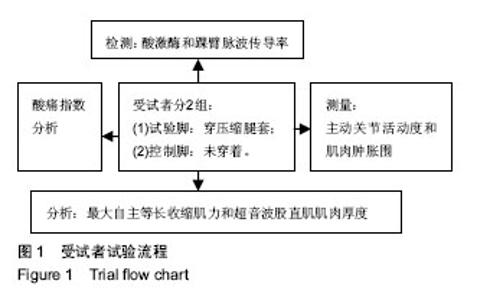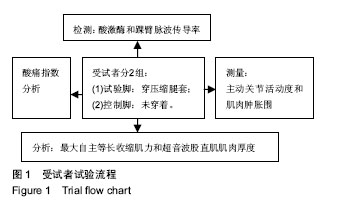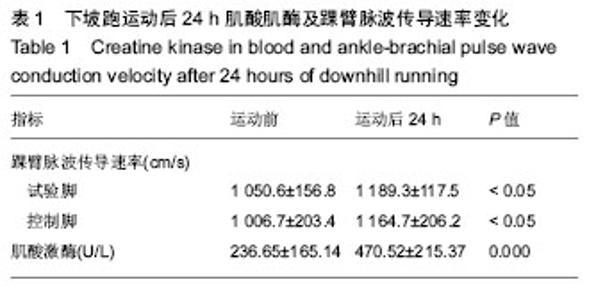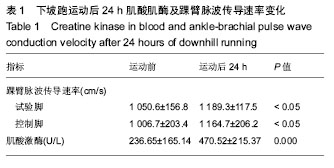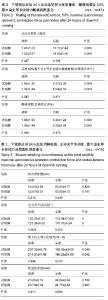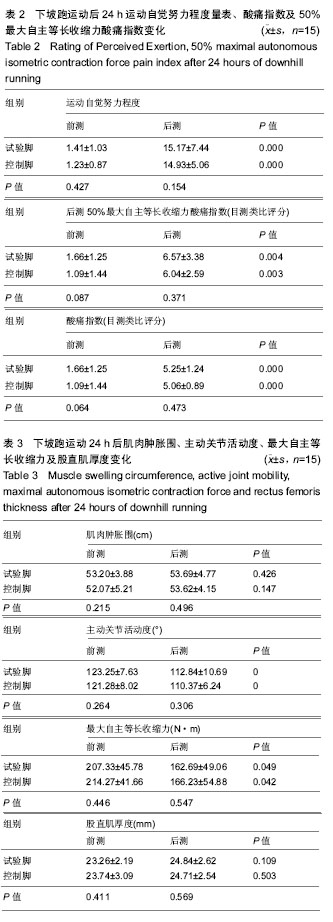| [1] Olin JW, White CJ, Armstrong EJ, et al. Armstrong and et al. Peripheral Artery Disease: Evolving Role of Exercise, Medical Therapy, and Endovascular Options. J Am Coll Cardiol. 2016; 67(11):1338-1357.[2] Kerksick CM, Wismann-Bunn J, Fogt D, et al. Changes in weight loss, body composition and cardiovascular disease risk after altering macronutrient distributions during a regular exercise program in obese women. Nutr J. 2010;9:59.[3] Codie Rouleau, Kim Lavoie, Simon Bacon, et al. Training Healthcare Providers in Motivational Communication for Promoting Physical Activity and Exercise in Cardiometabolic Health Settings: Do We Know What We Are Doing?. Current Cardiovascular Risk Reports.2015,9:29.[4] Howatson G, Van Someren K A. The prevention and treatment of exercise-induced muscle damage. Sports Med. 2008;38(6):483-503. Review.[5] Nikolaidis MG, Jamurtas A Z, Paschalis V, et al. The effect of muscle-damaging exercise on blood and skeletal muscle oxidative stress]. Sports Medicine.2008;38(7): 579-606.[6] Lee YS, Bae SH, Hwang J A, et al. The effects of kinesio taping on architecture, strength and pain of muscles in delayed onset muscle soreness of biceps brachii. J Phys Ther Sci. 2015;27(2):457-459.[7] Connolly D A, Sayers SE, McHugh MP. Treatment and prevention of delayed onset muscle soreness. The Journal of Strength & Conditioning Research, 2003,17(1): 197-208.[8] Cheung K, Hume P A, Maxwell L. Delayed onset muscle soreness. Sports Medicine.2003;33(2):145-164.[9] Herzog J A. Deep vein thrombosis in the rehabilitation client: Diagnostic tools, prevention, and treatment modalities . Rehabil Nurs. 1993;18(1):8-11. [10] Brennan MJ, Miller LT. Overview of treatment options and review of the current role and use of compression garments, intermittent pumps, and exercise in the management of lymphedema. Cancer.1998; 83(12): 2821-2827.[11] Bringard A, Perrey S, Belluye N. Aerobic energy cost and sensation responses during submaximal running exercise–positive effects of wearing compression tights. Int J Sports Med. 2006;27(5):373-378[12] Goh SS, Laursen PB, Dascombe B,et al. Effect of lower body compression garments on submaximal and maximal running performance in cold (10 C) and hot (32 C) environments. Eur J Appl Physiol. 2011;111(5):819-826.[13] Valle X, Til L, Drobnic F, et al. Compression garments to prevent delayed onset muscle soreness in soccer players. Muscles Ligaments Tendons J. 2014;3(4):295-302..[14] Sperlich B, Born DP, Swarén M, et al. Is leg compression beneficial for alpine skiers?. BMC Sports Sci Med Rehabil. 2013;5(1):18.[15] Blacher J, Asmar R, Djane S, et al. (1999). Aortic pulse wave velocity as a marker of cardiovascular risk in hypertensive patients. Hypertension.1999; 33(5):1111-1117.[16] Tanaka H, Munakata M, Kawano Y, et al. Comparison between carotid-femoral and brachial-ankle pulse wave velocity as measures of arterial stiffness. J Hypertens. 2009; 27(10):2022-2027.[17] Choo J, Shin C, Barinas-Mitchell E, et al. Regional pulse wave velocities and their cardiovascular risk factors among healthy middle-aged men: A cross-sectional population-based study. BMC Cardiovascular Disorders. 2014;14(1): 1-8.[18] Yamashina A, Tomiyama H, Arai T, et al. Brachial-ankle pulse wave velocity as a marker of atherosclerotic vascular damage and cardiovascular risk. Hypertens Res. 2003 ;26(8):615-622. [19] Barnes JN, Trombold JR, Dhindsa M, et al. Arterial stiffening following eccentric exercise-induced muscle damage. J Appl Physiol (1985). 2010;109(4):1102-1108.[20] Borg G. Psychophysical bases of perceived exertion. Medicine and science in sports and Exercise. Med Sci Sports Exerc. 1982;14(5):377-381.[21] Maridakis V, O’Connor PJ, Dudley G A, et al. Caffeine attenuates delayed-onset muscle pain and force loss following eccentric exercise. J Pain. 2007;8(3):237-243.[22] Tomiyama H, Yamashina A, Arai T, et al. Influences of age and gender on results of noninvasive brachial–ankle pulse wave velocity measurement: A survey of 12517 subjects. Atherosclerosis. 2003;166(2):303-309.[23] Ali A, Caine MP, Snow BG. Graduated compression stockings: Physiological and perceptual responses during and after exercise. J Sports Sci. 2007;25(4):413-419.[24] Ali A, Creasy RH, Edge J A. The effect of graduated compression stockings on running performance . J Strength Cond Res. 2011;25(5):1385-1392.[25] Duffield R, Cannon J,King M. The effects of compression garments on recovery of muscle performance following high-intensity sprint and plyometric exercise . J Sci Med Sport. 2010;13(1):136-140.[26] Ali A, Creasy RH, Edge J A. Physiological effects of wearing graduated compression stockings during running. Eur J Appl Physiol. 2010 ;109(6):1017-1025.[27] Howatson G, Van Someren K, Hortobagyi T. Repeated bout effect after maximal eccentric exercise. International Int J Sports Med. 2007;28(7):557-563. |
